Installation by The Rubin Museum at Union Square on Wood Wharf is based on Buddhist philosophy
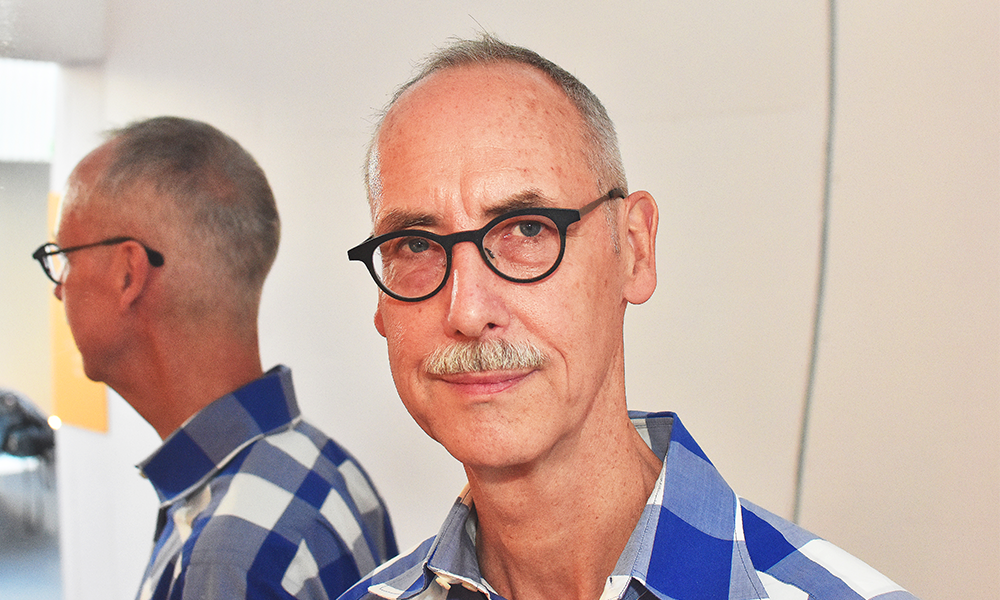
Subscribe to our free Wharf Whispers newsletter here
Tim McHenry’s job is essentially to get people interested in things.
A lithe and slender man with a strong shirt game, the chief programmatic officer of The Rubin Museum Of Art in New York is an erudite guide as he takes me round the institution’s Mandala Lab in Canary Wharf.
The cylindrical installation popped up in Wood Wharf’s Union Square in September, is free to visit and opens daily from noon until 6pm (8pm on Thursdays).
It’s set to remain in place until November 25, 2023 – but what on Earth is it?
“As the name might indicate, it’s an experiment,” said Tim.
“All we do at The Rubin is inspired by the significant body of Himalayan art we have in our collection – it’s an exploration of mind and a negation of life and death, the deep stuff.
“In order to welcome people into that, we thought we might want to bring them into the shallower end of the pool until they learn to swim.
“It needs to be accessible, not only because the wheelchair ramps work, but also because if you look at a painting in the collection, you might not understand it.
“Walk inside this version of a painting that we’ve created here in Canary Wharf, however, and its meaning becomes clear because it’s a visceral journey, and it will help you see what it is about you that you have the capacity to change.
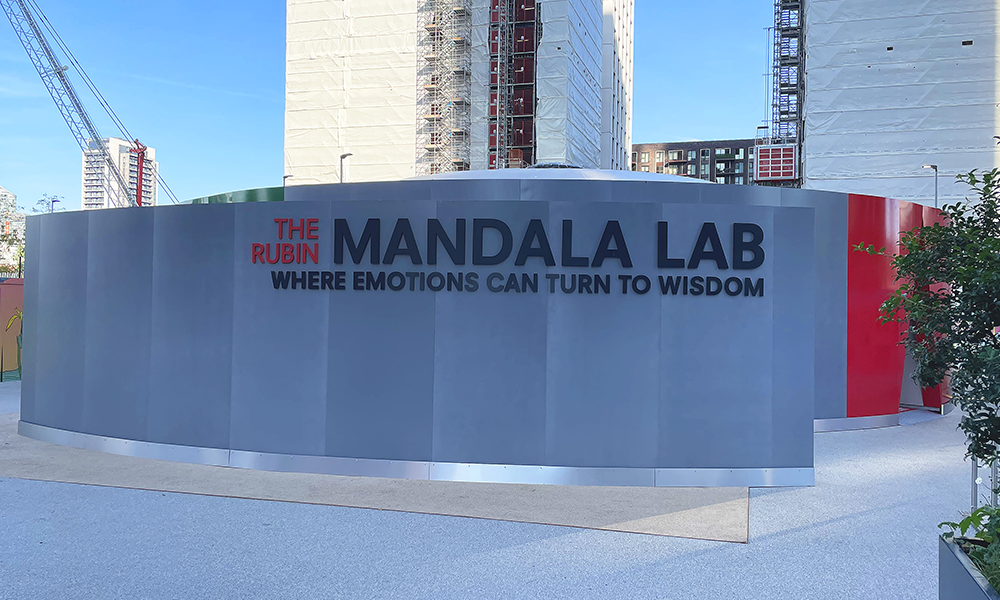
“The experience is based on a Tibetan Buddhist painting in The Rubin’s collection – a mandala, which in Sanskrit means circle.
“It has no beginning and no end, it’s all encompassing. This is a microcosm of your mind.
“Your embarkation point is on the outer rim and you’ve got to find your way to become the middle.
“At the centre is all-encompassing wisdom, but this only comes about by fully understanding what ignorance is.
“The Lab has four segments, each of which has a portal, the green room for envy, blue for anger, yellow for pride and red for attachment.
“You can enter through any of them.
“We’ve represented the mandala in the painting physically so people can step inside – it’s a metaphorical embodiment of the principles in the painting.
“All we’re doing is asking that people step inside – like Mary Poppins and Bert jumping into chalk on the pavement.”
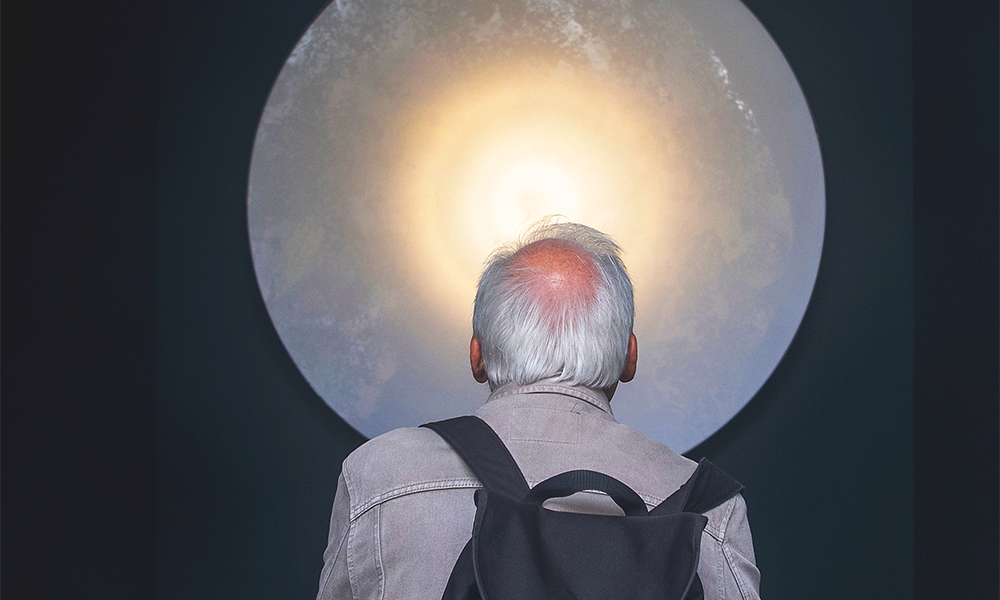
The experience comes in four parts.
- Envy sees visitors synchronise their breathing with a light, together with others in the same space.
- Pride is a chance to look at oneself in a distorted mirror before deciding which of four categories one fits into.
- Attachment is an opportunity to explore scent and memory.
- Anger is a chance to hit a gong before lowering it into a tank of water and seeing the furious vibrations quickly dissipate in the calming liquid.
Incidentally, the gongs have been designed by various prominent individuals including celebrated percussionist Evelyn Glennie and Peter Gabriel, formerly of Genesis.
Tim and The Rubin are more than happy to call in celebrities to further the museum’s reach and expose more people to the ideas in its collection.
“Since joining The Rubin when it opened just over 20 years ago, it’s been my job to make Himalayan art accessible and popular, using many techniques including high profile people, contemporary artists and culture,” said Tim who ran events for the New Yorker magazine prior to his role at the museum.
“What was really transformative was recognising that Buddhist art is largely about an exploration of the mind and with that came the interesting idea of looking at this philosophy in comparison to what we understand about how our brains work – the latest neuroscience.
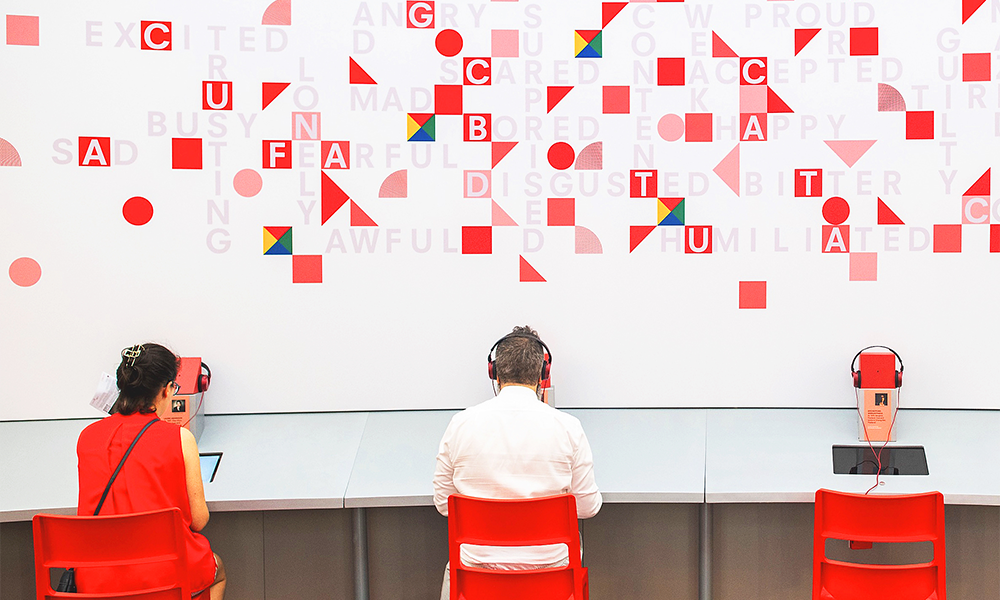
“We ran a series called Brainwave where we would have a scientist on stage with someone from a different walk of life and we’d try to unpack our behaviour and the choices we make by virtue of the context.
“We had Jake Gyllenhall on dreams, for example, and Whoopi Goldberg on time, which brought The Rubin attention – particularly secular – that it might not otherwise have had given that the art is largely Tibetan Buddhist and to some degree ritualistic in that it’s an exercise of the mind.”
That’s exactly the point of the Mandala Lab and you don’t need to be famous to experience it – although, incidentally, actor Brian Cox (Logan Roy in the excellent Succession) did pop up at the launch party to bash a gong in anger.
It’s intended as a journey of self discovery – a series of activities designed to provoke thoughts about the self, our place in the world and our relationship to others.
“Envy, for example, is devoted to this exploration of this rather sharp-elbowed, competitive thing that sometimes inhabits our minds and hearts,” said Tim.
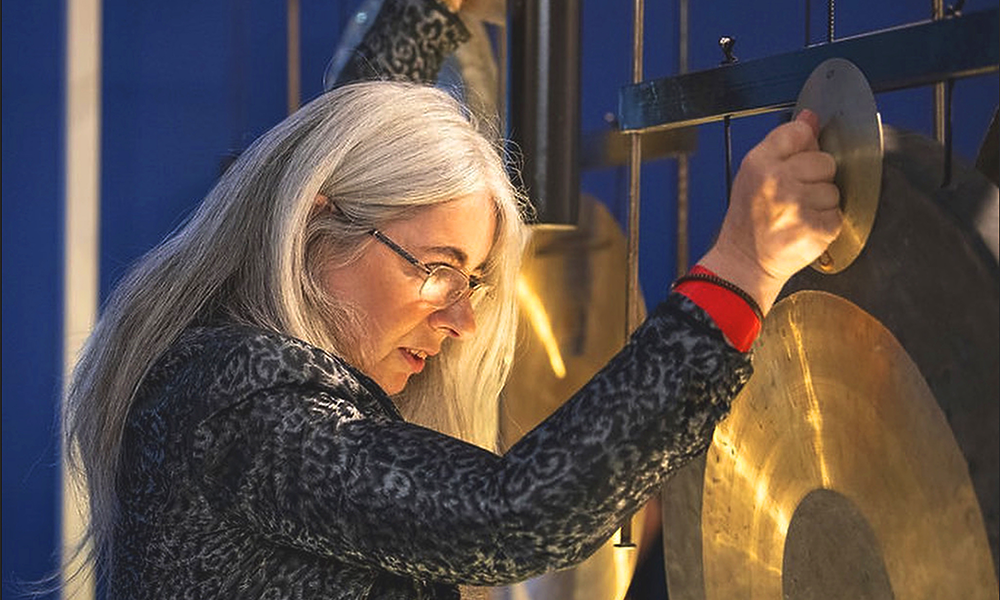
“Why did someone else get a pay rise and I didn’t? Whatever it is, it’s something that we feel we lack in ourselves – it’s always self-centric.
“Here the exercise is super simple – if the first thing you did in your life was take a breath, then it will probably be the last, and that’s all we’re asking people to do.
“They breathe in time with a light source.
“One of the most interesting advances in psychology and neuroscience is the idea of entrainment, where individuals sit in the same space and do something at the same pace.
“Their heartbeats start to align and that starts to develop that subliminal bond and, over time and repeated exposure, will start to foster pro-social behaviour, because we think of ourselves as one.
“When that happens, there’s nobody left to be envious of. It’s a metaphor, but it’s an experience metaphor, and this is what Mandala Lab is all about.”
Over the course of the four segments, visitors are gently exposed to the idea that we are all connected, that we are all the same and that we are also all different and individual – that these things are all true at the same time.
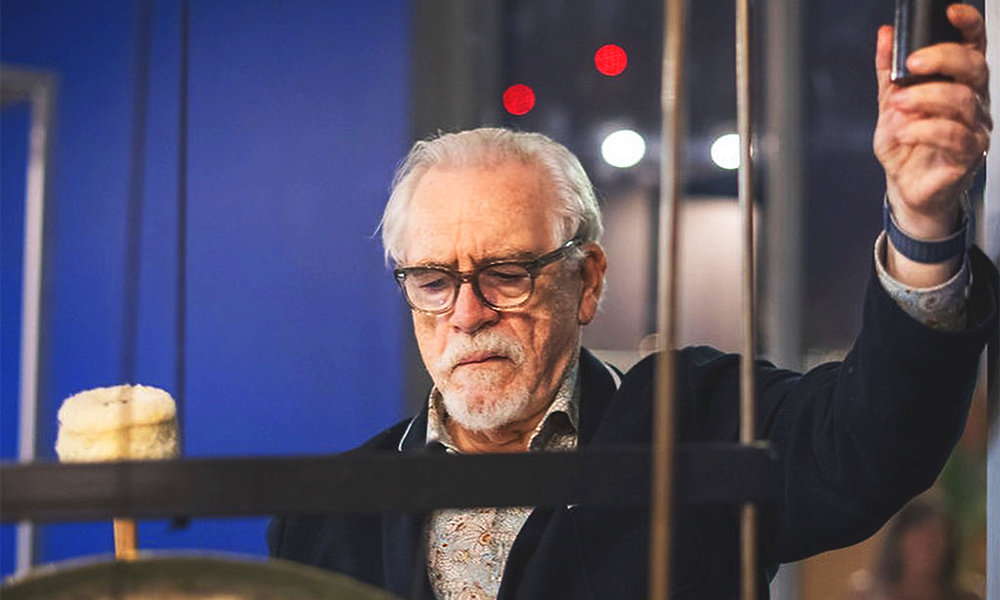
“It’s about establishing these teachings which are all about how we navigate our emotions – how we can harness the energy that we expend on maintaining them into a greater understanding of how we can deal with life,” said Tim.
“The aim is that we’re not buffeted by these reactive feelings of anger, attachment, envy and pride, which we find hard to control. Indeed, when we can’t control them, we tend to lash out and damage others and ourselves, which can lead to grief.
“Those behaviours can become habitual patterns that are ultimately harmful.
“What we’ve experienced in New York with the Lab is a move to a more selfless nature – from the individual to the community – that’s something we could certainly do with a little more of.
“I hope this installation is a spur to understanding for people on the Wharf – it’s free to everyone so come on down.”
Find out more about the Mandala Lab here
Read more: Sign up for the Santa Stair Climb at One Canada Square
Read Wharf Life’s e-edition here
Subscribe to our free Wharf Whispers newsletter here
- Jon Massey is co-founder and editorial director of Wharf Life and writes about a wide range of subjects in Canary Wharf, Docklands and east London - contact via jon.massey@wharf-life.com



